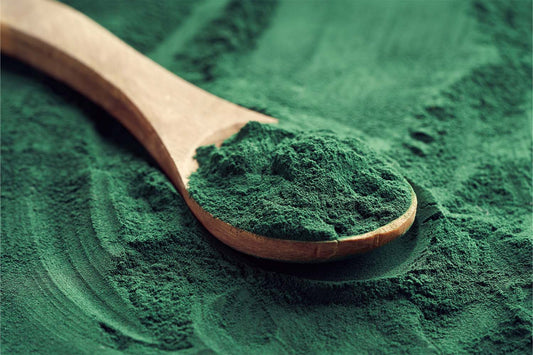Muscle recovery is a crucial aspect of fitness that often slips under the radar. Whether you're a dedicated athlete or a weekend warrior, focusing solely on your workout regimen without incorporating adequate recovery can lead to setbacks like muscle soreness, fatigue, and even injuries.
So, it's not just about how hard you push yourself during your workouts but also about how you pull back and allow your body to recover. Today, we'll explore stretching for muscle recovery and how iwi life's omega-3 supplements can enhance your recovery.
Why Is Muscle Recovery Crucial?
When it comes to fitness, we often celebrate the grueling workouts, the pounds lifted, and the sweat-drenched T-shirts as markers of a good training session. These are important indicators of your commitment and effort, but the often overlooked aspect of your fitness regimen is what happens after the workout — muscle recovery.
Muscle recovery isn't just about immediate relief from soreness and fatigue; it's also about long-term fitness. Proper muscle recovery sets the stage for consistent, long-term fitness gains. It helps you avoid overuse injuries, reduces the risk of muscle imbalances, and enables you to perform at your best in subsequent workouts.
In the absence of adequate recovery, the risk of injury spikes, and the likelihood of hitting a fitness plateau increases dramatically.
How Does Stretching Aid Muscle Recovery?
Contrary to common belief, stretching isn't merely a warm-up or cool-down activity. It's a crucial aspect of fitness that has far-reaching implications on muscle health and overall physical performance.
So how does stretching actually aid muscle recovery?
Stretching activates your muscle fibers in a different way than regular exercise. When you stretch, you're effectively lengthening the muscle fibers and tendons, which can lead to improved muscle and joint flexibility. Enhanced flexibility, in turn, helps you perform better during your workouts and reduces the risk of injuries.
Another important benefit of stretching is improved blood circulation. Better blood flow means that more nutrients and oxygen can reach muscle cells, and toxins like lactic acid can be flushed out faster. As a result, you can trim down the duration of conditions like delayed onset muscle soreness (DOMS).
Essentially, better blood circulation can speed up the muscle repair process, allowing you to recover faster and train more effectively.
Are There Different Types of Stretching?
Stretching is not a monolithic exercise; it comes in various forms, each with its own set of benefits and best-use cases. The primary types of stretching include:
- Dynamic stretching: Best for warm-ups, this type of stretching involves moving parts of your body through a full range of motion but doesn't involve holding the stretch.
- Static stretching: Often employed in cool-downs, static stretches are held for a certain period, typically 15-60 seconds, allowing muscles to relax and lengthen.
- PNF (proprioceptive neuromuscular facilitation): A more advanced form of stretching that involves both stretching and contracting the targeted muscle group. It's particularly useful for increasing range of motion.
- Ballistic stretching: This involves quick, bouncing movements and is generally not recommended for the general population as it can lead to muscle strains.
For the purpose of muscle recovery, static and PNF stretching have shown to be particularly effective. These types of stretching focus on muscle relaxation and lengthening. They give the muscle fibers a chance to unwind, which can significantly alleviate symptoms of muscle soreness post-exercise.
9 Stretches for Muscle Recovery
After pushing through a high-intensity workout or an extended running session, you'll want to give your muscles the care they need to recover. Introducing stretches specifically geared towards muscle recovery can make all the difference between feeling sore or ready for another workout.
Here are nine targeted stretches designed to hit those muscles that are often sore and stiff post-workout. Incorporating these into your routine could improve flexibility, reduce soreness, and speed up your recovery time:
1. Pigeon Pose
Muscles targeted: Glutes, hips, and lower back.
This yoga-inspired pose is excellent for stretching the glutes and hips, which are crucial areas that bear a lot of the workload in most physical activities. Whether you're lifting weights or running, these muscles play a significant role.
- Start in a plank position.
- Bring your right knee forward towards your right hand while sliding your left leg backward, straightening it behind you.
- Try to square your hips and stay balanced.
- Hold the pose for 15-30 seconds before switching sides.
2. Downward Dog to Cobra

Muscles targeted: Back, shoulders, hamstrings, and calves.
This is more of a dynamic stretch that moves from one pose to another, engaging multiple muscle groups. It is particularly good for people who engage in full-body workouts or sports that demand agility.
- Begin in a downward dog position with your feet hip-width apart and your hands planted firmly on the ground. Your body should form an inverted 'V.'
- From here, transition by lowering your hips towards the ground as you lift your upper body, rolling into a cobra pose.
- Your gaze should be upwards, and your shoulders should be relaxed.
3. Child’s Pose Side Stretch
Muscles targeted: Lats, obliques, and shoulders.
The child’s pose is often seen as a relaxation pose, but when tweaked a bit, it becomes an effective stretch for the sides of your torso.
- Start in a classic child's pose with your knees wide apart and your big toes touching.
- Extend your arms out in front of you and lower your chest toward the ground.
- From this position, walk both hands over to the right to stretch the left side of your torso.
- Hold for 15-30 seconds, then walk your hands to the opposite side to stretch your right torso.
4. Cross-Body Shoulder Stretch
Muscles targeted: Shoulders, upper arms, and upper back.
After workouts that involve a lot of upper-body movement or weight lifting, your shoulders can feel incredibly tense. This simple but effective stretch can be done anywhere and is highly effective for relieving shoulder tension.
- Stand or sit upright.
- Extend one arm across your body at shoulder height.
- Take your opposite arm and place it just above the elbow of your extended arm, applying slight pressure to deepen the stretch.
- Hold this position for 15-30 seconds before switching to the other arm.
5. Runner's Lunge With Spinal Twist
Muscles targeted: Legs, glutes, and torso muscles.
This stretch combines the elements of a classic lunge with a spinal twist, serving as a dynamic stretch that not only works your lower body but also engages your torso.
- Begin in a standing position and transition into a lunge by stepping one foot forward and sinking your hips until both knees are bent at a 90-degree angle.
- Place the elbow of your opposite arm on the knee of the front leg.
- From this position, rotate your upper torso while keeping your lower body stable.
- Look upwards as you do so.
- Hold for 15-30 seconds before switching sides.
6. Frog Stretch

Muscles targeted: Inner thighs and groin.
This is an excellent stretch for the inner thighs and groin area, which often get overlooked in more traditional stretching routines.
- Start on all fours with your palms flat on the ground and your knees bent.
- Gradually widen your knees as much as you can, aiming to get them in line with your ankles.
- Keep your feet flexed.
- Once you're in position, push your hips back towards your heels and hold for 15-30 seconds.
7. Garland Pose
Muscles targeted: Hips, groin, and glutes.
Known as Malasana in yoga, the Garland Pose is a deep squat that offers multiple benefits, including opening up the hips and stretching the groin.
- Start in a standing position with your feet slightly wider than hip-width apart.
- Sink down into a squat, ensuring that your heels stay on the ground. If that's difficult, you can roll up a towel to support them.
- Use your elbows to gently push against your inner knees, opening up the hips even more.
- Hold for 15-30 seconds.
8. Supine Scorpion Stretch
Muscles targeted: Lower back, hip flexors, obliques, and abdominal muscles.
This stretch is particularly beneficial for those who have lower back issues or tight hip flexors, common symptoms for people who sit a lot during the day.
- Lay flat on your back on a comfortable surface.
- Extend your arms out to the sides for stability.
- Keeping your shoulders flat on the ground, drop both knees to one side, as close to the ground as possible.
- Hold for 15-30 seconds, then switch sides.
9. Ankle-to-Knee Pose
Muscles targeted: Glutes, lower back, hamstrings, and hip flexors.
This seated stretch is excellent for targeting the muscles of the lower back and the glutes, particularly useful for people who suffer from lower back pain.
- Sit on the ground and extend your legs.
- Place one ankle on top of the opposite knee.
- Keeping your back straight, lean your torso forward towards the leg.
- For a deeper stretch, you can use your elbow to gently push against the knee of the elevated leg.
- Hold for 15-30 seconds before switching sides.
What Are Other Complementary Methods for Muscle Recovery?
While stretching is indispensable for muscle recovery, it's not the only tool in your recovery toolkit. Diverse strategies can add layers of effectiveness to your post-workout regimen, each addressing different facets of recovery:
Ice Baths
Submerging your body in cold water after an intense workout has benefits that are backed by science. Ice baths work on the principle of “cold therapy,” which helps to reduce muscle tension and soreness.
The cold temperature narrows blood vessels, reducing blood flow to the immersed area. This can help minimize tissue breakdown and reduce tension. When you step out of the ice bath, your blood vessels open up again, increasing the flow of “new,” oxygen-rich blood, which speeds up the recovery process.
Foam Rolling
The technical term for foam rolling is self-myofascial release, a technique used to alleviate muscle tension and improve blood circulation. Foam rolling is an excellent method for targeting specific muscle groups that may be overly tense or sore.
Essentially, the foam roller acts as a makeshift masseuse, offering a deep-tissue massage that can release muscle knots and trigger points. This can help relax tight muscles and accelerate the healing process by improving blood flow to the impacted area.
Balanced Diet
The role of nutrition in muscle recovery cannot be overstated. Consuming a balanced diet rich in protein, carbohydrates, and healthy fats can greatly accelerate the muscle repair process.
Protein helps in muscle protein synthesis, carbohydrates replenish glycogen stores, and fats, particularly omega-3 fatty acids, offer tension-soothing benefits. By optimizing your nutrition, you're laying the groundwork for efficient muscle recovery and subsequent performance improvements.
Omega-3 Supplements
Among the fats considered beneficial for recovery, omega-3 fatty acids are particularly noteworthy. Here at iwi life, we offer plant-based, algae-derived omega-3 supplements that stand out for their efficacy and sustainability.
Harvested from our own strain of algae, Nannochloropsis, these supplements are farmed sustainably, aligning with our mission for natural and eco-friendly production methods. What sets our supplements apart is the presence of DHA and EPA, two types of omega-3s that are especially effective in soothing tension and supporting overall wellness.
The Bottom Line
Muscle recovery is an essential, albeit often overlooked, aspect of any effective fitness routine. It's not just about what you do during your workouts but also about how you recuperate afterward. Stretching is a crucial element in this, enhancing muscle flexibility, improving blood circulation, and promoting faster recovery.
However, stretching alone is not enough. Combining it with other methods like ice baths, foam rolling, a balanced diet, and omega-3 supplementation can significantly boost your recovery process and overall well-being.
Adopt a holistic, balanced approach to your recovery and overall health. If you're committed to achieving a sustainable, comprehensive fitness regimen, consider incorporating iwi life's algae-derived omega-3 supplements as a key part of your strategy.
Sources:
Workout Recovery: Why It’s So Important | CNET
The Importance of Stretching | Harvard Health
Current Concepts in Muscle Stretching for Exercise and Rehabilitation | PMC
Stretching and Flexibility – Types of Stretching | MIT



















